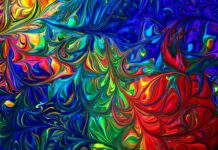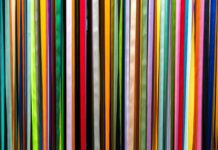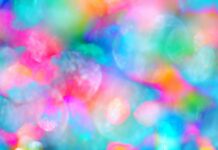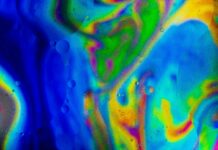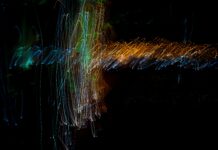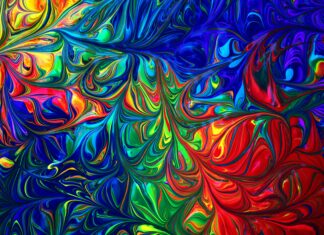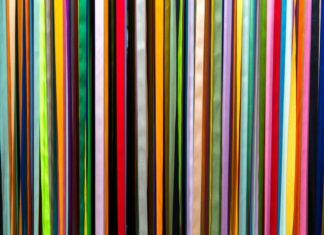Distortion: Exploring the Shifting Realities
In the tapestry of our perception, reality weaves a complex and intricate pattern. Yet, as our senses grasp at the world, what we perceive is not always a faithful representation of what truly exists. This intriguing divergence between the actual and the perceived has long intrigued scholars, philosophers, and scientists alike, giving birth to the concept of distortion. Distortion, in its essence, embodies the alteration, deformation, or misrepresentation of information, be it visual, auditory, or even conceptual. It is a phenomenon that transcends mere optical illusions or auditory tricks, delving deep into the realm of cognition, communication, and the very fabric of our understanding. The study of distortion unravels a tapestry of its own, one that encompasses a myriad of disciplines and holds profound implications for how we perceive, interpret, and interact with the world.
The roots of distortion dig deep into the annals of human history. From the earliest days, artists and artisans grappled with the challenge of translating three-dimensional reality onto two-dimensional canvases, facing the inevitable distortions that resulted from this translation. As civilizations advanced, so did the understanding of distortion, encompassing domains beyond the realm of art. The advent of optics and the understanding of how light interacts with the eye further unraveled the complexities of perception. The curvature of lenses, the aberrations of light, and the subtleties of the human visual system introduced new dimensions to the concept of distortion. As the lenses of microscopes and telescopes extended our vision to previously uncharted territories, they simultaneously unveiled the intricate interplay between clarity and distortion.
While the visual domain captivated the minds of many distortion aficionados, the auditory world held its own mysteries. Sound, a seemingly straightforward phenomenon, proved to be equally susceptible to distortion’s elusive grasp. The echoes bouncing off surfaces, the interplay of frequencies, and the subtle alterations as sound waves traversed various mediums laid the groundwork for the realm of acoustic distortion. Musicians and sound engineers found themselves navigating this intricate terrain, seeking to harness the creative potential of distortion in the realm of music. The electric guitar’s raucous growl, born from the deliberate manipulation of sound wave harmonics, became an iconic embodiment of controlled auditory distortion.
Beyond these sensory realms, distortion manifested itself in the cognitive landscapes of psychology and neuroscience. Perceptual illusions illuminated the gaps and biases in our understanding of the world, revealing how the mind constructs its version of reality. The malleability of memory, the selective nature of attention, and the subtle influences of context painted a picture of perception that was far from objective. Distortion, once thought to be an external force acting upon our senses, now appeared to be an integral part of the very machinery of consciousness.
Communication, too, found itself entangled with the enigmatic threads of distortion. Language, a vessel for ideas and thoughts, proved to be an imperfect conduit, often leading to misinterpretations, misunderstandings, and the unintentional alteration of meaning. Cultural nuances, individual perspectives, and the limitations of vocabulary all contributed to the complex dance of linguistic distortion. In an increasingly interconnected world, where information traverses the globe in an instant, the challenges of accurate communication have taken center stage, shining a spotlight on the intricacies of cross-cultural and cross-linguistic distortion.
As technology surged forward, the boundaries of distortion continued to expand. Digital manipulation of images and videos introduced a new era of visual distortion, blurring the lines between truth and falsehood. Deepfakes, hyper-realistic simulations of individuals saying or doing things they never did, emerged as a stark reminder of the power of distortion in the digital age. The democratization of content creation empowered individuals to craft narratives that could bend reality to their will, raising ethical and societal questions about the nature of truth and the erosion of trust.
In the grand tapestry of human knowledge, distortion weaves an intricate and multifaceted pattern. From the artistry of visual representation to the intricacies of auditory perception, from the depths of cognition to the challenges of communication, distortion unveils the underlying complexity of our reality. This exploration delves into the heart of a phenomenon that shapes our understanding of the world and challenges the very nature of truth. As we journey through the following pages, we will unravel the various dimensions of distortion, each revealing a new facet of this captivating enigma.
Here are ten key features of Distortion:
Amplitude Alteration:
Distortion involves a change in the amplitude (volume) of an audio signal, resulting in the alteration of the original sound waveform.
Nonlinearity:
Distortion is often caused by nonlinearities in electronic components or systems, where the output signal is not directly proportional to the input signal.
Harmonic Generation:
Distortion can create harmonics or overtones that were not present in the original sound. These additional frequencies can give the sound a richer or more complex character.
Clipping:
Clipping distortion occurs when the amplitude of the signal exceeds the maximum range that a system or device can handle, resulting in a “clipped” or flattened waveform.
Saturation:
Saturation distortion occurs when an amplifier or system reaches its maximum output level, causing the waveform to flatten and resulting in a warm and compressed sound.
Frequency Response Alteration:
Distortion can lead to changes in the frequency response of an audio signal, causing certain frequencies to be emphasized or attenuated.
Phase Distortion:
Phase distortion can result in shifts in the phase relationships between different frequency components of a signal, affecting its timbre and spatial characteristics.
Intermodulation Distortion:
This type of distortion occurs when two or more frequencies interact in a nonlinear system, generating new frequencies that weren’t present in the original signal.
Waveform Distortion:
Waveform distortion changes the shape of the signal waveform, leading to altered timbre and tonal qualities.
Dynamic Range Reduction:
Distortion can reduce the dynamic range of a signal, causing quieter parts to become louder and reducing the overall perceived contrast between loud and soft sounds.
These features collectively contribute to the unique character and texture of distorted sounds, which can be creatively utilized in music production, sound design, and various forms of multimedia.
Distortion, in its multifaceted essence, represents a fascinating realm where the boundaries of reality and artistic expression meld into a vibrant tapestry of auditory exploration. Its transformative power is a portal to sonic dimensions that challenge convention, sparking emotional resonance and evoking visceral responses. Through the lens of auditory perception, distortion transcends mere alteration, becoming a conduit for both creative innovation and scientific inquiry.
Imagine a soundscape where the rules of pristine clarity are defied, giving way to a labyrinth of sonic irregularities. Distortion ventures into the realm of the surreal, forging connections between disparate elements of sound that would otherwise remain discreet. It’s the juxtaposition of smooth and jagged, harmonious and dissonant, familiar and uncanny that beckons the listener to immerse themselves in an altered reality.
Within the realm of music, distortion has evolved from an unintentional artifact to a deliberate tool of expression. From the raucous growls of electric guitars to the electronic pulses of synthesizers, distortion reshapes timbres, taking them from the serene plains of natural sound into the realm of electrified emotion. The electric guitar’s symbiotic relationship with distortion is a testament to the emotional resonance that can be born from the harmonious discord of sound.
The world of visual art has long embraced distortion as well. In the abstract expressionist movement, distortion finds its counterpart in the way shapes and colors deviate from their conventional forms to evoke a deeper connection with the audience. This fusion of the senses, where the visual becomes auditory and vice versa, expands the potential for emotional impact.
Even the natural world is not devoid of distortion’s touch. Imagine the distortion of light as it refracts through water droplets, creating a rainbow that defies the linear spectrum. The warping of reflections on the surface of a pond, the way distant sounds seem to echo through air, and the shimmering mirages on hot desert horizons — all are reminders of the natural distortions that lend our perception a dreamlike quality.
Technology, too, finds its narrative intertwined with the evolution of distortion. From the early days of vacuum tubes and analog circuits to the precision of modern digital processing, the pursuit of capturing and manipulating distortion has been a driving force in audio engineering. Each advance in technology unravels new layers of sonic possibility, allowing artists and engineers to push the boundaries of creative expression.
In the realm of psychology, distortion reveals itself as an unexpected prism through which memory and perception are refracted. Our recollections are often embellished by the tints of our emotions and personal biases, coloring events in ways that might diverge from objective reality. This psychological distortion is a reminder of the subjective nature of experience, a reminder that how we perceive the world is as much a product of our minds as it is of external stimuli.
Distortion’s journey is an eternal dance between control and chaos. It’s the chaotic beauty that arises when orderly patterns encounter the unexpected, resulting in a symphony of the unpredictable. The tension between what is and what could be births a universe of infinite possibilities, and in embracing these distortions, we uncover novel truths that would otherwise remain hidden.
In the end, distortion stands not as a mere manipulation of sound, but as an embodiment of the human spirit’s unyielding desire to explore, create, and redefine. It is a testament to the boundless potential of human ingenuity, the fusion of science and art, and the audacious pursuit of the extraordinary within the ordinary. Distortion, as a concept, as an experience, and as a creative force, invites us to challenge our preconceptions, blur boundaries, and embark on an ever-evolving journey of discovery.




